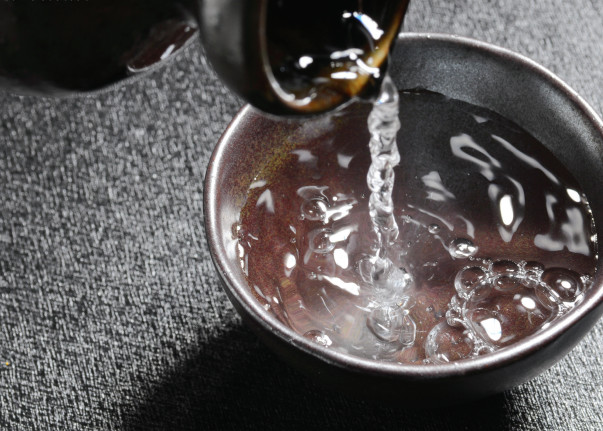
The Japanese spirit is relatively unknown in the UK. Laura Foster makes it her mission to provide some education.
What is it?
A tasting for Otogo shochu at Tayer + Elementary last year highlighted the fact that shochu is a blind spot in most UK bartenders’ knowledge, so let’s dive into this varied Japanese spirit.
There are two major types of shochu: honkaku, and continuously distilled. “Honkaku roughly translates as ‘authentic’ or ‘orthodox’,” explains Liam Scandrett, senior business development manager for spirits at the Wine & Spirit Education Trust.
“Honkaku shochu is the traditional pot distilled spirit of Japan, made using a variety of agricultural materials and koji. It is traditionally distilled only once, sometimes in vacuum stills, and the resultant spirit is typically bottled at a lower abv than we find in western spirits, between 20% and 30%. Depending on the raw material and koji used, flavours range from fruity and floral, through umami, meaty, earthy, creamy and dessert-like.”
Continuously distilled shochu, however, is far more neutral: “The closest thing we have to it is vodka. It’s the stuff you’ll see in most cocktail bars if you go to Japan,” says Sam Boulton, who’s currently writing a book on shochu and was director of recently closed Japanese cocktail bar Shibuya Underground in Birmingham.
Alongside honkaku and continuously distilled shochu there is another drink called awamori that is often counted as a shochu category. A koji rice spirit hailing from the Okinawa prefecture in the south west of Japan, awamori was a precursor to shochu.
But we’ll leave the tale of this spirit for another day. The raw ingredients used to make honkaku shochu can range from barley to buckwheat and even sake lees. While barley was the predominant shochu ingredient until the mid-2000s, sweet potato shochus now have a similar share of production, according to the Japan Sake & Shochu Makers Association. Sweet potato shochu comprises 44% of the market, barley is 43%, while everything else represents a much smaller piece of the pie.
Roughly speaking, shochu is made using a two-step fermentation process. The first fermentation sees water, koji, yeast and a grain such as rice combined, and around five days after, the main ingredient is added, and the secondary fermentation takes place, producing the mash for that single pot distillation.
Geographically speaking, “honkaku shochu has some legally defined GIs, and is mostly made on the large island of Kyushu and the Ryuku chain of islands to the south west,” says Scandrett. These GIs include (but are not limited to) satsuma shochu, a sweet potato spirit made in the Kagoshima prefecture; kuma shochu, a rice spirit made in the Kuma district of Kumamoto; and iki shochu, a barley spirit from Iki island.
What’s out there?
Tengu Sake has two shochu available. White Fuji (30% abv) is a 100% barley shochu, meaning that the koji starter is also made using barley instead of rice. It has a creamy, barley-forward nose and a sweet, soft, approachable palate, reminiscent of new make with a significant mineral edge.
Awakening (25% abv) is made by ancient sake brand Kimura from the brewery’s sake lees. A bright, tropical nose of melon and papaya leads on to a fascinating palate that opens with a burst of those fruits, before a creamy mid-palate washes in and dries everything out to a chalky finish. The aforementioned shochu brand Otogo has recently been brought to the UK by new company Peoplegood – admin@peoplegood.jp.
Otogo produces kuma (rice spirit) shochus, and we were treated to four expressions at the tasting. Its flagship Otogo shochu (25% abv) is made with yellow koji and boasts notes of pear, melon and unripe banana, a drying walnut note and sprinkling of white pepper. Its Jidai Kura Hachi shochu is representative of a more classic shochu character. The use of black koji instead of yellow leads to richer flavours. The result is an oilier palate, with dulce de leche, sesame seeds and a spicy zip.
How to use it
“In Japan, shochu only used to be drunk in the west of the country, but now it’s drunk everywhere,” says Hisanori Shimoi, one of the directors at Peoplegood. “It has always been enjoyed on its own, on the rocks, with hot or cold water. [Older generations] used to drink it with hot water. In recent decades it’s drunk with mixers.”
Whether you drink shochu cold or warm can be dictated by the production process. “A vacuumdistilled rice shochu is very delicate, and would typically be enjoyed cold,” explains Boulton. While bartenders in Japan are more commonly using column-distilled shochu in their mixed drinks, Boulton believes that the honkaku shochu offers a more promising playground for UK bartenders.
Alex Kratena and his team certainly demonstrated its versatility, mixing a shochu that was aged in sherry barrels for three years with Whistlepig rye, Discarded Cascara vermouth and walnut shoyu to produce a delicate Japanese twist on a Manhattan. At the other end of the scale, they took the Jidai Kura Hachi shochu and created a light, bright dessert drink with Greek yoghurt, dulce de leche, lemon and hazelnut that paired perfectly with white miso cheesecake.
The possibilities of this understated Japanese spirit are endless.


